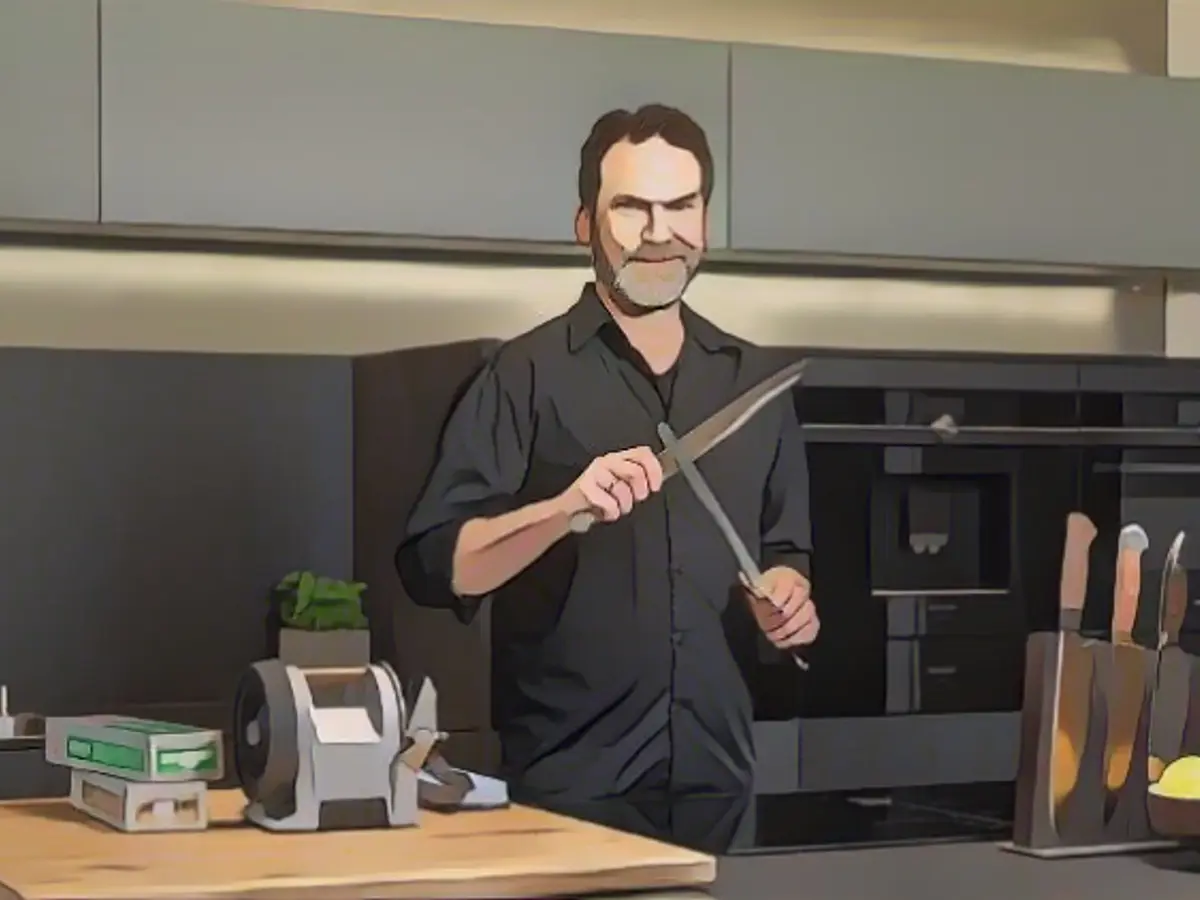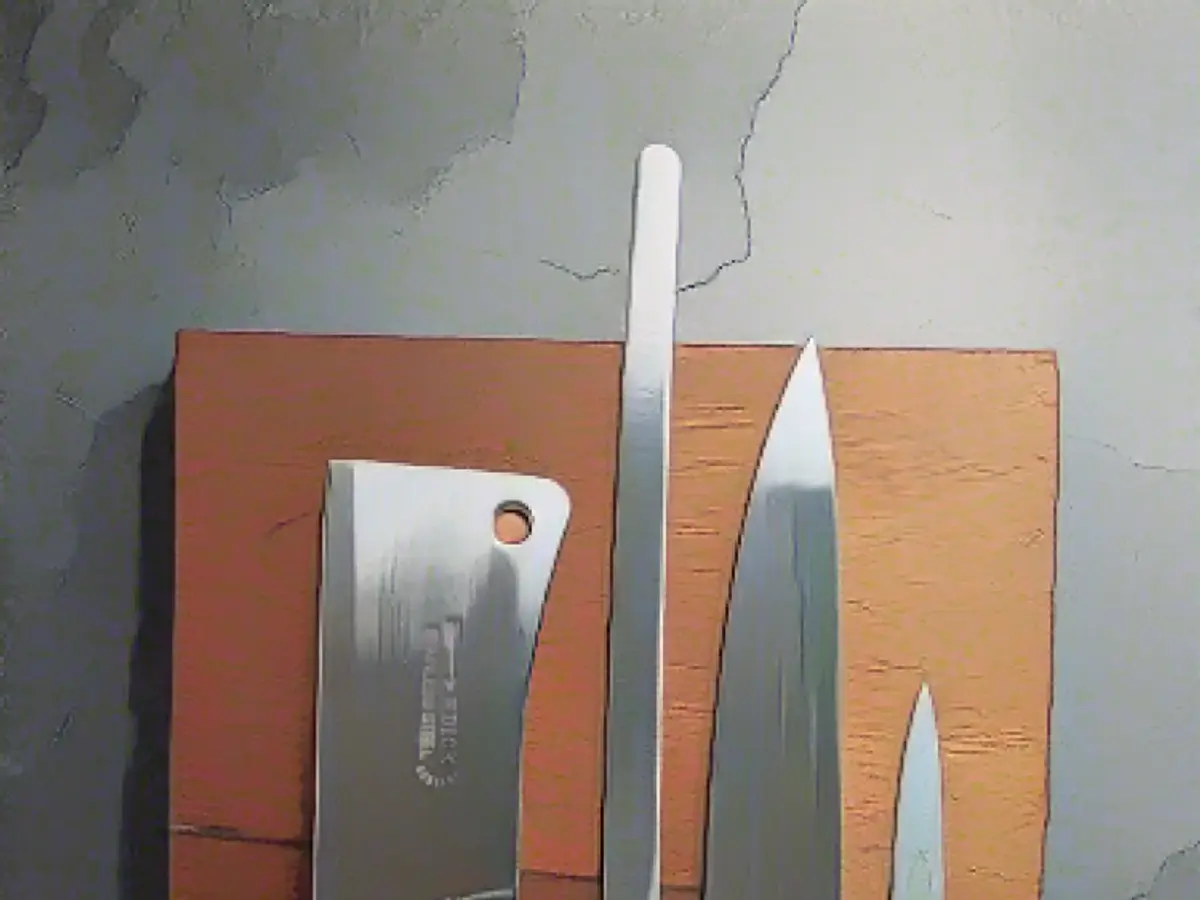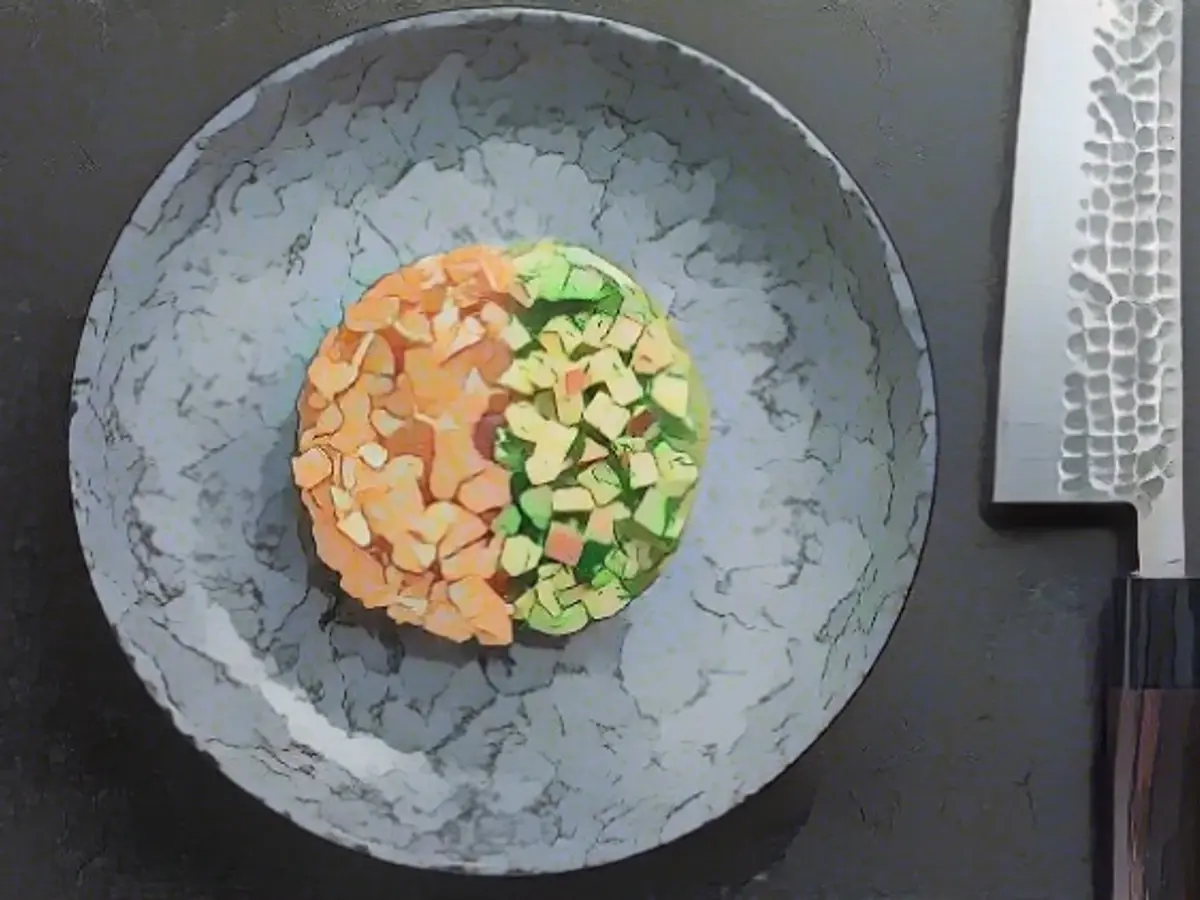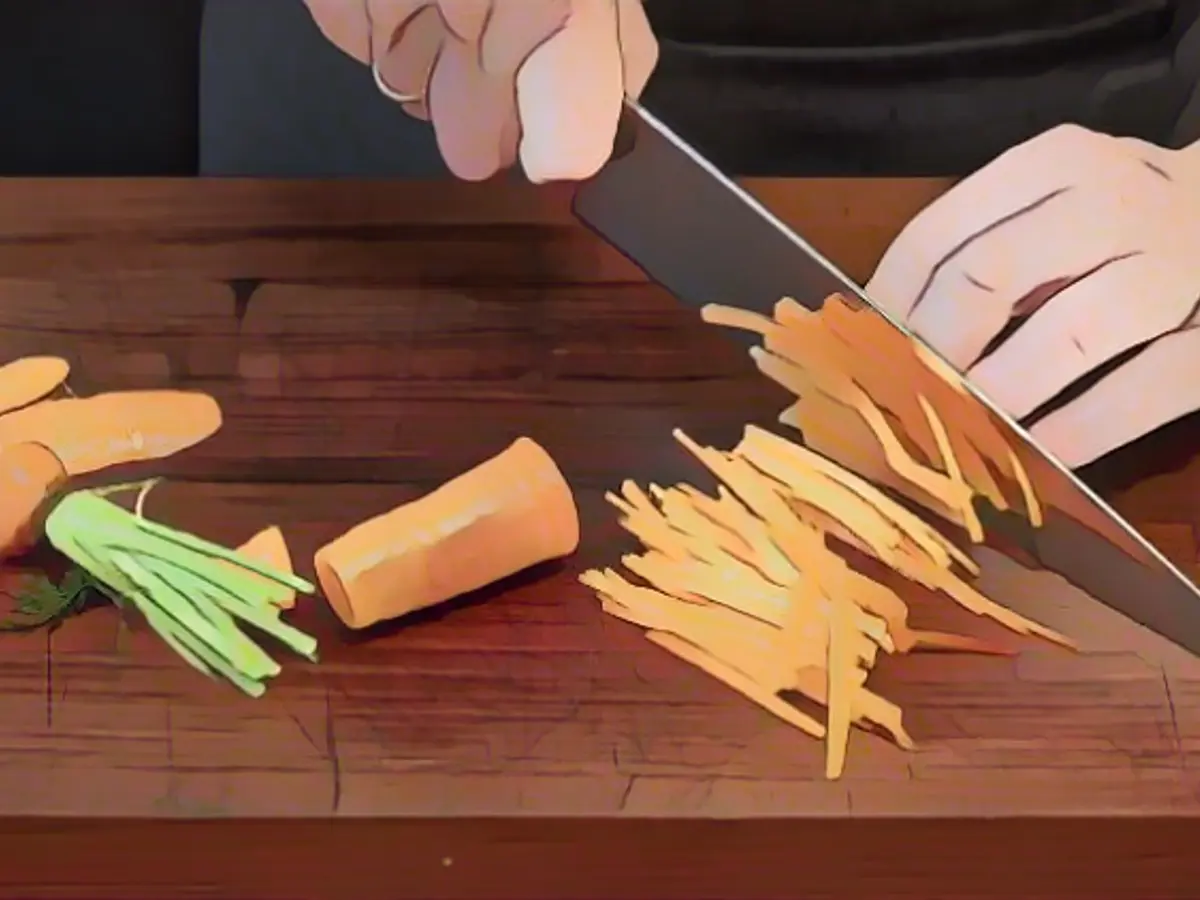Cutting like the pros - Everything you need to know about kitchen knives
Cooking is only fun with the right kitchen knives. Torsten Kluske explains which blades you need for which purpose, how to handle them and how to keep them sharp. Even professionals will be surprised at what they can learn from him about the most important tools in the kitchen.
Anyone familiar with"Kitchen Impossible" may have noticed that Tim Mälzer and his opponents usually always bring their own knives into the hosts' kitchens. The professional chefs know how important it is to have the right tools. Not only does it make the work easier, many dishes or preparation steps are not possible without it. Every amateur chef will realize this sooner or later and say goodbye to the dull stuff in the drawer.
But what is the right tool? What makes a good knife? Which shape is suitable for which use? How do you cut and how do you keep the blades sharp? Torsten Kluske answers these and many more questions in "Kitchen knives".
For beginners and advanced users

The book has 320 pages. The enormous size is not only due to the many beautiful and informative photographs by Sebastian Schollmeyer. Kluske goes into detail and far beyond what you can read about kitchen knives elsewhere. But you don't have to read everything.
Beginners can also just read about the essentials or devote themselves exclusively to the art of sharpening. Those who want to delve deeper into the subject will not be disappointed. Even professionals will probably learn something new about kitchen knives.
Entertaining material science
The first chapter is the best example of this, as it deals with materials science. This sounds boring at first and may remind some users of a course at vocational school. However, it is actually very interesting to learn that not all steel is the same, what makes it different, what alloys can do and why harder does not necessarily mean better. There is a lot to learn, and Kluske explains it so clearly that it is a pleasure to read.
The production of kitchen knives is also not a must, but just as interesting and entertaining. And if you know the path from the coarse cleaver to the shiny end result, you will have even more pleasure when you wield a fine blade in the kitchen.

But then it's down to the nitty gritty. Because then you will find out what different types of knife there are, how they are constructed and which form factor is suitable for which purpose. More importantly, however, you will probably learn how to hold the tool correctly and how to hold the food without cutting your fingers.
Videos cost extra
A little criticism is in order here. Kluske describes the techniques very well and photos help you to understand them. However, accompanying videos would be even more informative here, as they would be later when sharpening knives. Kluske also offers them, but for the courses published on 7hauben you have to pay an additional 35 euros.
In the following chapter, you will learn all about the geometry of the kitchen knife. This may not be of interest to everyone. But it is fascinating to learn about the visual difference between a blue man and a tailcoat and how many bevels taper towards the actual cutting edge. Who knows why a convex grind of the primary bevel provides both stability and easy release of the food from the blade?
Sharp details
The bevel is where things get really exciting. This is the area that makes the knife sharp and needs to be resharpened regularly. Here, readers will learn, among other things, what the rest of the blade contributes to sharpness or why a blunter angle above the cutting edge plus a micro bevel are advantageous in kitchen practice. This knowledge is not absolutely necessary to become a knife master, but it helps to understand the art of sharpening.

But first comes one of the most important and reassuring pieces of information for overwhelmed beginners. In principle, you can get by with three knives: Chef's knife, bread knife, office knife. This chapter is a must. Kluske clearly explains what the three form factors are good for and how to use them.
This is followed by sharpening, the heart of the book, so to speak. Because whether you like it or not, there's no getting around it. Or as the author puts it: "Sharpening is like cleaning windows". When and how often it is necessary depends on various factors, and when the time comes, it can get quite complicated.
Skillful tricks
You first learn how to basically work the cutting edge and then remove the "sacred burr" that remains if you do it right. Then you learn which techniques to use with different tools. The main focus here is on how to work with various sharpening rods or whetstones.
The stones in particular are a science in themselves, but Kluske also explains them very clearly with photos and diagrams. A lot depends on the right angle, which can only be approximated freehand. This is why the book also describes a whole range of aids, from simple wedges to very complex manual sharpening aids.
Appetizing finale
Once you have sharp knives, it's time to put them into practice. This means that there are 40 recipes on almost 50 pages, all of which are easy to prepare, but of course require a lot of chopping. You will not only learn different cutting techniques, but also which knife to use and how to use it. The tasty chapter is garnished with appetizing photos that make you want to cook them again.
Once you have finished the book, you will no longer wonder what you are supposed to read on 320 pages about kitchen knives. Torsten Kluske has managed to pack in a huge amount of information without boring the reader. You learn what is important when it comes to kitchen knives and much more. The book is always entertaining, even when it comes to dry technical details. The only pity is that the accompanying videos are not free.
Lesen Sie auch:
After reading about the different types of kitchen knives and their uses, you might be interested in reading reviews about various technology tests of different brands of kitchen knives to see how they perform under real-life conditions. Furthermore, conducting your own technology tests on the kitchen knives you currently own or are considering purchasing can provide valuable insights into their sharpness, durability, and ease of use.
Source: www.ntv.de








